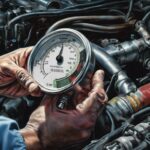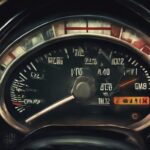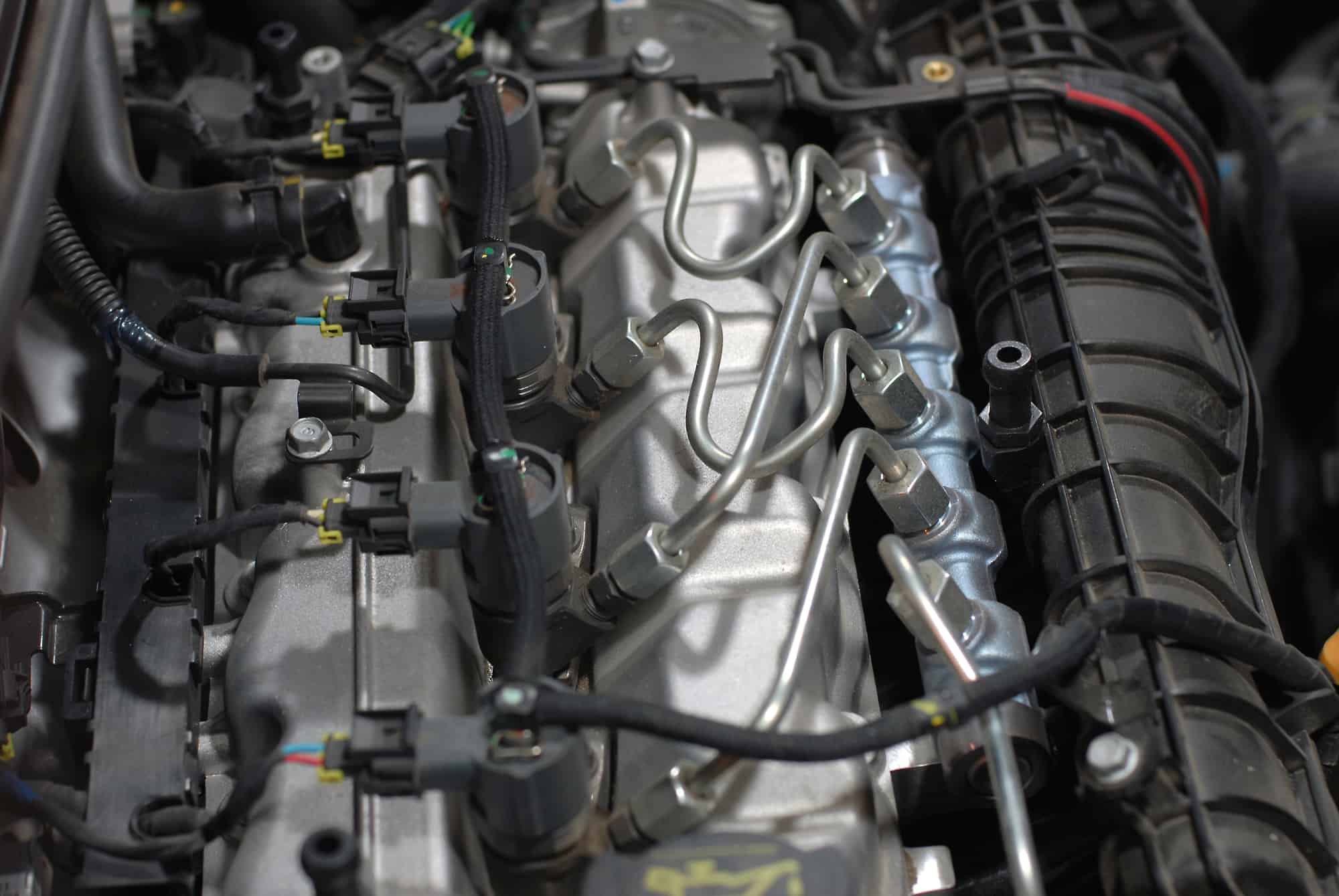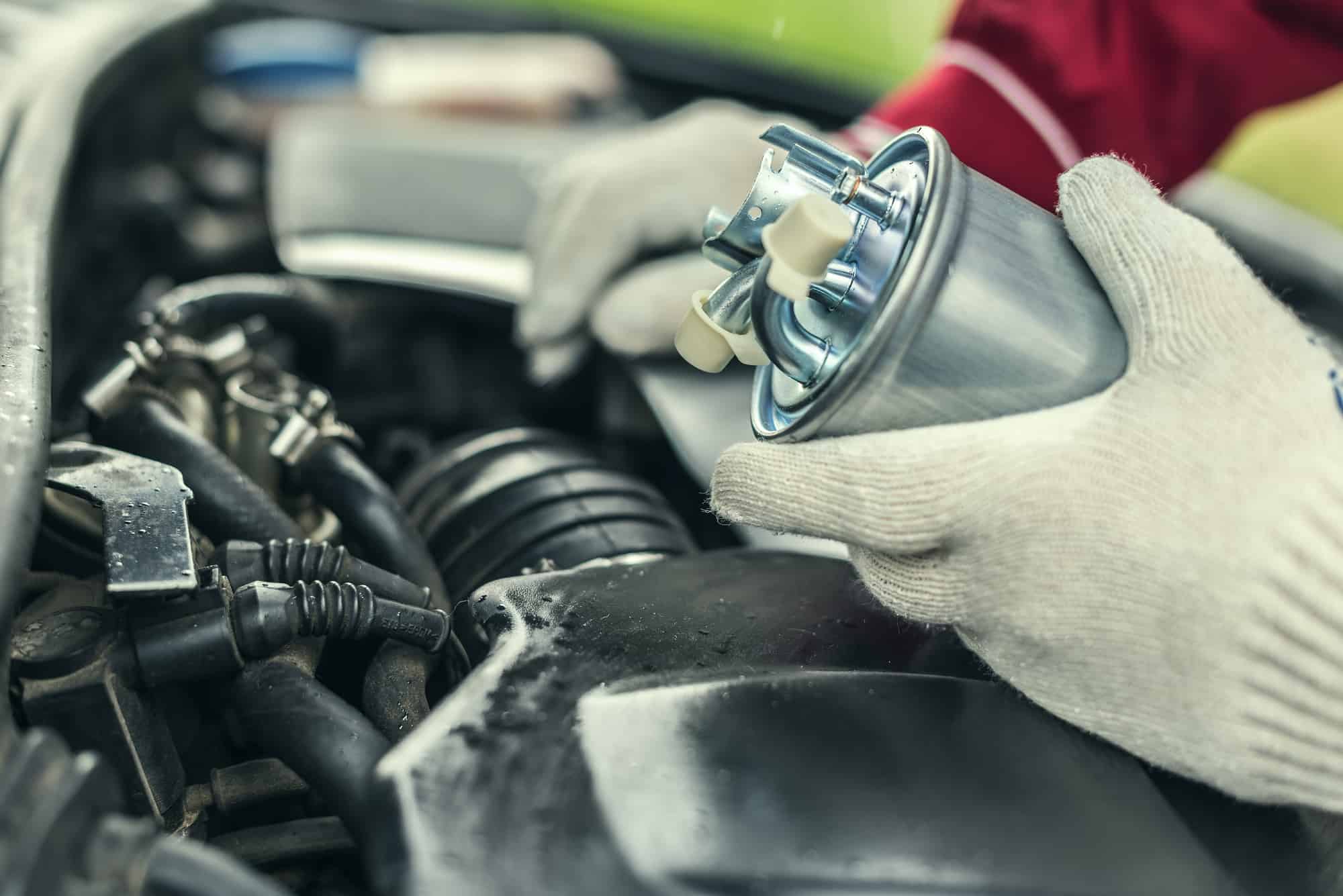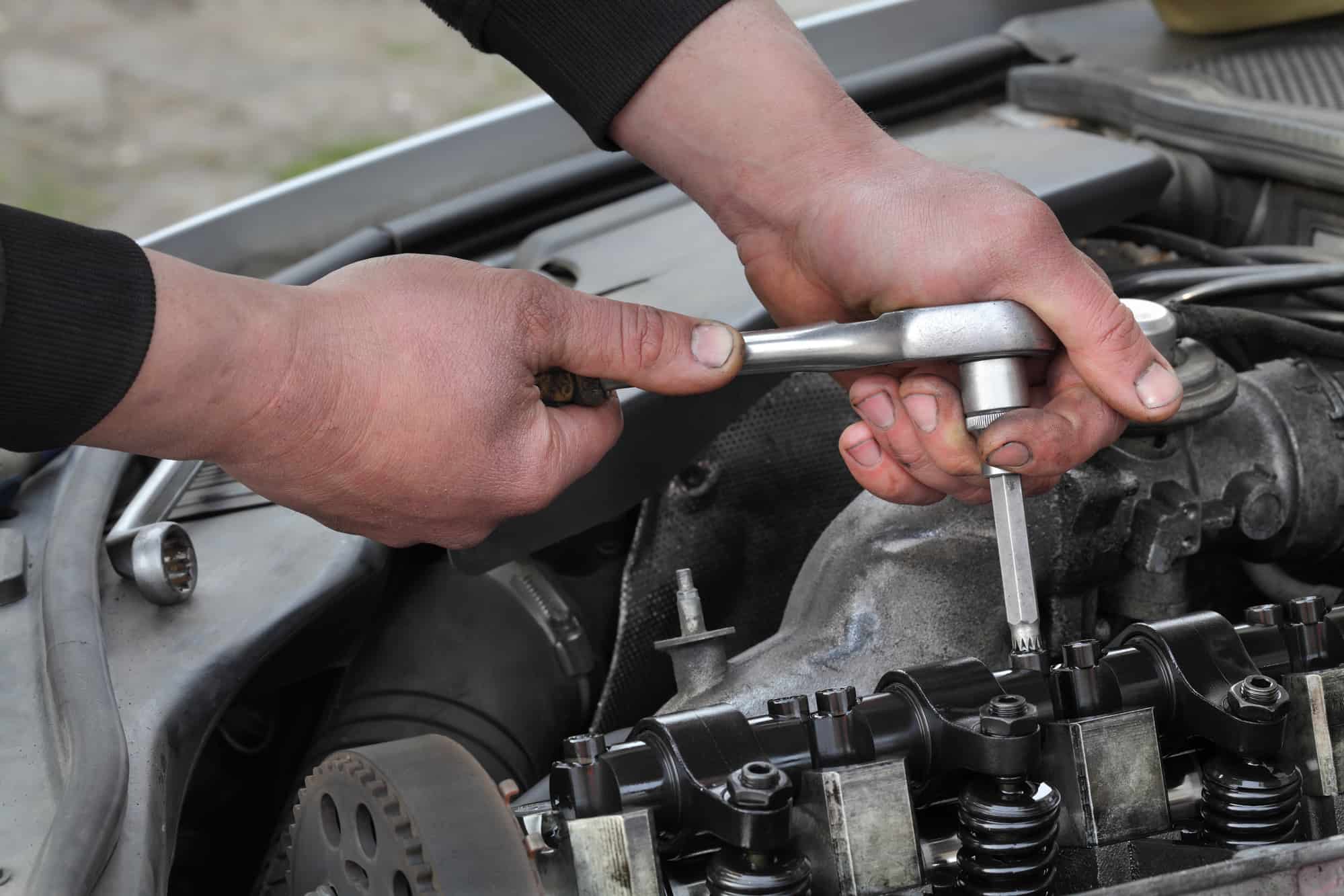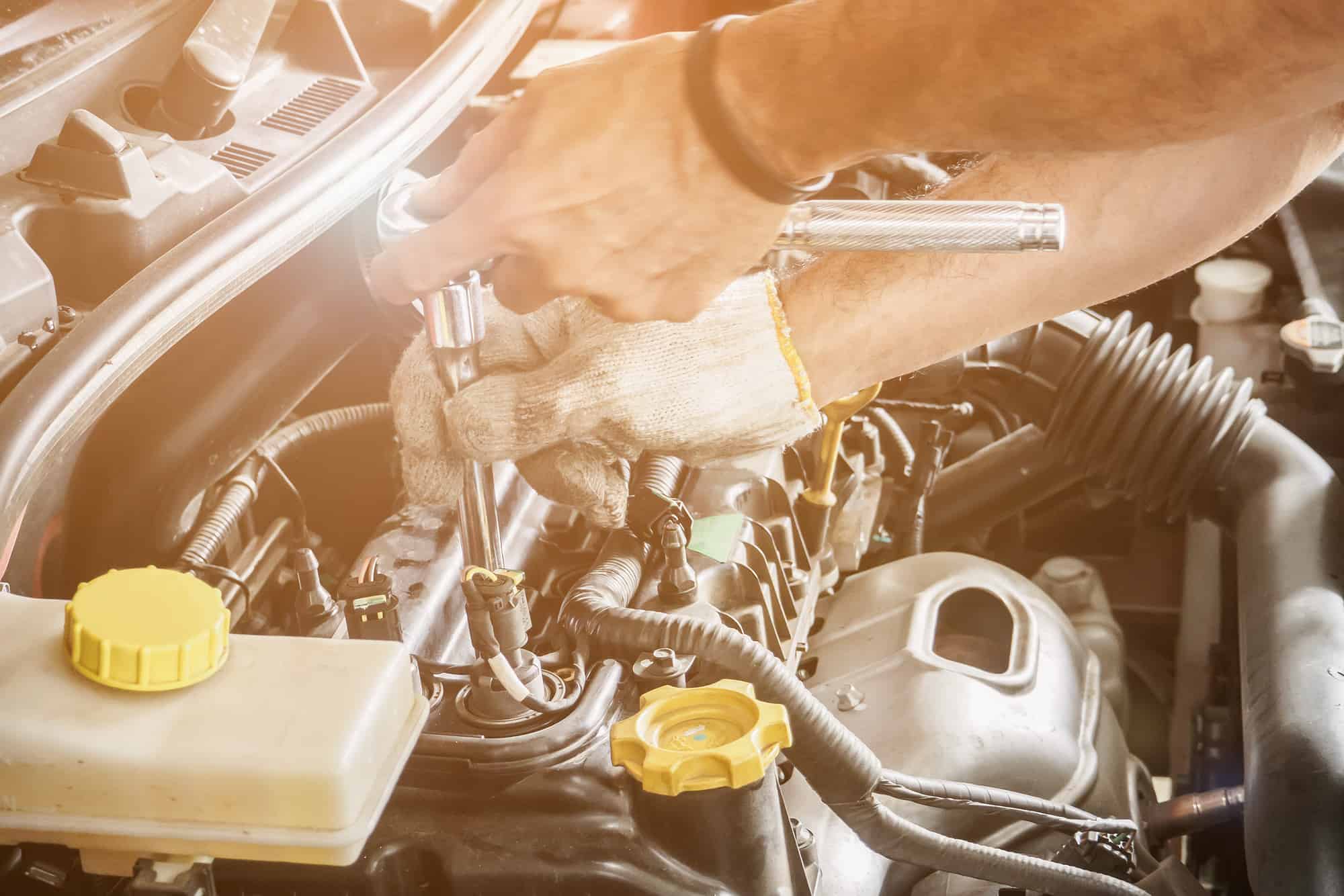Fuel systems are an essential part of any vehicle, ensuring that the engine receives the right amount of fuel to run efficiently. Two key components are the fuel filter and the fuel pump, both of which play crucial roles in the transportation and of fuel to the engine.
However, issues can arise when one or both of these components fail, leading to potential performance problems and even leaving drivers stranded on the side of the road. Knowing how to identify the signs of a bad fuel filter or fuel pump can help prevent costly repairs and keep your vehicle running optimally.
A bad fuel filter can cause a variety of symptoms, including hard starting, inconsistent fuel flow, and decreased overall performance. Since the fuel filter’s primary function is to remove contaminants and debris from gasoline, a clogged or dirty filter can cause the engine to struggle for the fuel it needs to run efficiently.
The fuel pump is responsible for delivering fuel from the vehicle’s gas tank to the engine; if it fails or operates ineffectively, the engine won’t receive the necessary fuel when needed. Common signs of a failing fuel pump include sudden loss of power, engine sputters, or even a stalled vehicle.
If you’re experiencing issues with your vehicle’s fuel system, it can be difficult to determine whether the problem lies with the fuel filter or fuel pump. Both components play crucial roles in ensuring proper fuel flow to the engine, and a malfunction in either can lead to serious problems.
In this article, we’ll explore the differences between a bad fuel filter and a bad fuel pump, and provide you with some tips on how to diagnose and fix these issues.
What Is The Best Method To Identify If Its A Bad Fuel Filter Or A Bad Fuel Pump Causing Issues?
The easiest way to determine if a bad fuel filter or bad fuel pump is causing issues is to perform a fuel pressure test. This test involves attaching a pressure gauge to the fuel system and measuring the pressure while the engine is running. If the pressure is low, it could indicate a problem with the fuel pump. If the pressure is normal, but the engine is still experiencing issues, it could be a sign of a clogged fuel filter.
However, it’s important to note that other factors could also contribute to fuel system problems, so you may need to dig deeper for a proper diagnosis.
Overview of the Fuel Filter and Fuel Pump’s Role in the Fuel System
The fuel filter is responsible for filtering out impurities and debris from the fuel before it reaches the engine. Over time, these impurities can accumulate and clog the filter, leading to reduced fuel flow and poor engine performance. Therefore, it is essential to replace the fuel filter at the recommended interval to maintain optimal performance.
On the other hand, the fuel pump is responsible for delivering the filtered fuel to the engine at the appropriate pressure. If the fuel pump fails or malfunctions, it can lead to an insufficient fuel supply or possibly no supply at all. This situation can cause the engine to stall or not start, highlighting the importance of a properly functioning fuel pump.
Identifying Bad Fuel Filter and Fuel Pump Symptoms
Knowing the symptoms of a bad fuel filter or fuel pump can aid in diagnosing issues early and avoiding costly repairs. Some common signs of a bad fuel filter or bad fuel pump may include:
| Symptom Name | Symptom Description | Caused by Fuel Pump, Fuel Filter, or Both? |
|---|---|---|
| Engine Won’t Start | The engine may not fire up since it’s starved of fuel, or it might fire up for a second and die again. | Fuel Filter |
| Hard Starting | A dirty fuel filter may restrict the fuel system flow, or at least make it inconsistent, which can cause the vehicle to experience hard starting. | Fuel Filter |
| Engine Performance Problems | A bad or failing fuel filter can cause engine performance problems, such as decreased power and acceleration, rough idle, and stalling. | Fuel Filter |
| Increased Fuel Consumption | If your vehicle’s engine is less efficient, it may be due to a bad fuel pump or a bad fuel filter. | Both |
| Less Power | If your vehicle’s engine is less powerful, it may be due to a bad fuel pump or a bad fuel filter. | Both |
| Abnormal Engine Combustion | A clogged fuel filter can cause abnormal engine combustion, which can result in engine hesitation or stumbling during acceleration. | Fuel Filter |
| Strong Odors | A clogged fuel filter can cause strong fuel odors inside and outside the vehicle. |
In cases where the engine doesn’t start or struggles to maintain power, it could be indicative of a malfunctioning fuel pump. It is essential to act quickly and consult with a professional mechanic to address potential fuel system issues for the continued performance and longevity of the vehicle.
What Is A Fuel Filter?
A fuel filter’s primary function is to clean the fuel before it reaches the engine, preventing contaminants and foreign particles from causing damage or reducing engine performance.
It acts as a barrier between the fuel tank and the engine, ensuring that only clean fuel reaches the fuel injectors.
These filters are especially important for protecting sensitive components like fuel injectors, which require a clean and consistent supply of fuel to operate efficiently.
The fuel filter accomplishes its task by trapping any foreign particles and rust that may be present in the fuel line. Over time, these contaminants can build up, causing the filter to become clogged and potentially leading to reduced fuel flow, poor engine performance, or even engine damage.
Types of Fuel Filters
There are two main types of fuel filters: inline and cartridge. Inline fuel filters are attached directly to the fuel line and are typically found in older vehicles. They are generally made of plastic or metal and contain a paper, synthetic, or cellulose strainer inside that effectively removes contaminants from the fuel.
Cartridge fuel filters, on the other hand, are usually found in newer vehicles and feature a replaceable filter element. They are installed inside the fuel tank or near the engine and are also designed to trap foreign particles and rust, ensuring the efficient operation of the fuel injectors.
What Are The Signs of a Bad Fuel Filter?
A bad fuel filter can cause various engine performance issues, such as a sputtering engine, reduced engine power, and misfires. The engine might stall or have difficulty accelerating. These problems occur because a clogged fuel filter restricts the flow of fuel to your engine, affecting the quality of fuel reaching the combustion chamber. As the fuel supply becomes inconsistent, reduced engine performance can be observed, especially when the vehicle is under load or going uphill.
If you notice your vehicle is having a hard time starting, it could be due to a clogged or damaged fuel filter. Hard starting occurs when the fuel filter is restricting fuel flow, causing the engine to struggle to ignite properly. When the fuel filter is severely restricted, the check engine light might also illuminate
Another common symptom of a bad fuel filter is stalling or hesitation when you try to accelerate your vehicle. This issue arises because the engine requires more fuel to deliver adequate power during acceleration. However, if the fuel filter is clogged, restricted fuel flow can lead to hesitation or stumbling during this process. In some cases, the engine might even stall when deprived of enough fuel.
What Is An Engine Fuel Pump?
The fuel pump transfers fuel from the fuel tank to the engine through the fuel lines. Its primary function is to maintain adequate fuel pressure, ensuring that the engine receives consistent fuel flow to function optimally. A bad fuel pump can lead to a host of issues, such as engine stalls while idling, surging, and loss of power during acceleration.
Types of Fuel Pumps
There are mainly two types of fuel pumps:
- Mechanical Fuel Pump: Typically found in older, carbureted engines, these pumps are driven by the engine’s camshaft or distributor shaft. They work by using a diaphragm and spring mechanism to pump fuel from the tank to the carburetor.
- Electric Fuel Pump: Common in modern vehicles with fuel injection systems, electric pumps are located inside or near the fuel tank. They rely on electric power from the vehicle’s battery to generate fuel pressure, ensuring a continuous flow of gasoline to the engine.
Differentiating Between Fuel Filter and Fuel Pump Issues
When it comes to diagnosing issues with a vehicle’s fuel system, both the fuel filter and fuel pump are common sources of problems with fuel supply and fuel pressure.
1. Use Diagnostic Equipment
In order to accurately diagnose fuel system problems, mechanics often use an OBD2 scanner. This tool plugs into the vehicle’s ECU (Electronic Control Unit) and retrieves stored error codes that may indicate issues with the fuel filter or pump.
Additionally, mechanics may also use more advanced diagnostic equipment such as a fuel pressure gauge, fuel flow meter, and vacuum gauge to help determine if the issue lies within the fuel pump, fuel filter, or somewhere else in the fuel system.
Here are the most common OBD diagnostic codes associated with fuel system problems:
| OBD Error Code | Description |
|---|---|
| P0171 | System Too Lean (Bank 1) – Indicates that the engine is receiving too much air and not enough fuel on the bank 1 side of the engine. This can be caused by a faulty fuel pump or fuel filter, among other things. |
| P0174 | System Too Lean (Bank 2) – Similar to P0171, but indicates that the issue is on the bank 2 side of the engine. |
| P0180 | Fuel Temperature Sensor A Circuit Malfunction – Indicates that there is a problem with the fuel temperature sensor circuit. This can be caused by a bad fuel pump or fuel filter, among other things. |
| P0190 | Fuel Rail Pressure Sensor Circuit Malfunction – Indicates that there is a problem with the fuel rail pressure sensor circuit. This can be caused by a bad fuel pump or fuel filter, among other things. |
| P0191 | Fuel Rail Pressure Sensor Circuit Range/Performance – Similar to P0190, but indicates that the fuel rail pressure sensor circuit is not operating within the expected range. |
| P0192 | Fuel Rail Pressure Sensor Circuit Low Input – Indicates that the fuel rail pressure sensor circuit is receiving a low input signal. This can be caused by a bad fuel pump or fuel filter, among other things. |
| P0193 | Fuel Rail Pressure Sensor Circuit High Input – Indicates that the fuel rail pressure sensor circuit is receiving a high input signal. This can be caused by a bad fuel pump or fuel filter, among other things. |
| P0230 | Fuel Pump Primary Circuit Malfunction – Indicates that there is a problem with the fuel pump primary circuit. This can be caused by a bad fuel pump or fuel filter, among other things. |
| P0231 | Fuel Pump Secondary Circuit Low – Indicates that the fuel pump secondary circuit is receiving a low input signal. This can be caused by a bad fuel pump or fuel filter, among other things. |
| P0232 | Fuel Pump Secondary Circuit High – Indicates that the fuel pump secondary circuit is receiving a high input signal. This can be caused by a bad fuel pump or fuel filter, among other things. |
2. Monitoring Fuel Pressure and Flow
One method of distinguishing between fuel pump and fuel filter issues is to monitor the fuel pressure and flow in the vehicle.
Carry out a fuel pressure test, measuring the pressure in the fuel lines to ensure it falls within the proper range for the vehicle’s make and model. A significant drop in fuel pressure might indicate a problem with the fuel pump or a clogged fuel filter.
Another step in the diagnosis process is to check the fuel flow rate, which can also be a sign of a failing fuel pump or a clogged filter. A reduced flow rate may be caused by a partially blocked filter, while a drastically decreased or no flow may point to a failed fuel pump.
3. Fuel Filter Diagnosis
To accurately diagnose if your vehicle has a bad fuel filter, follow these steps:
- Inspect the filter: Check for any visible signs of damage or clogging in the fuel filter, which could be caused by dirt, debris, or rust.
- Listen for fuel pump noises: A strained or weakened fuel pump may produce unusual sounds, indicating that it is working harder to push fuel through a clogged filter.
- Monitor engine performance: A clogged fuel filter can cause engine hesitation, misfires, and rough idling, which can lead to poor fuel mileage and performance issues.
- Check for fuel leaks: If there are signs of a fuel leak around the filter, it could be due to a damaged or loose connection, which may require filter replacement.
- Evaluate the replacement cost: If the fuel filter needs to be replaced, consider the cost of the new filter and the labor required for the repair.
Analyzing Fuel Pressure and Flow Data
Performing a fuel pressure test can provide crucial information on the health of your fuel filter and fuel pump. Here’s how to analyze the fuel pressure and flow data:
- Fuel Pressure: Monitor the fuel pressure in your vehicle’s fuel system using a fuel pressure gauge. If the pressure is consistently lower than the manufacturer’s recommended range, it could indicate a clogged fuel filter or a failing fuel pump.
- Fuel Flow: To measure the fuel flow, connect a fuel flow test kit to your vehicle’s fuel system. A reduced fuel flow, compared to the manufacturer’s specifications, could be due to a clogged filter.
In general, maintaining a clean fuel filter is essential for optimal engine performance and efficiency. Regular maintenance, including filter replacement as specified by the manufacturer, can help prevent issues and prolong the life of your fuel pump and engine.
4. Fuel Pump Diagnosis
Diagnosing a faulty fuel pump starts by identifying symptoms that may indicate potential issues. These symptoms can include a whining noise coming from the fuel tank area, stalling that restarts after several minutes, and trouble starting the car.
For diesel engines, additional symptoms might involve poor engine performance and reduced fuel efficiency. To rule out other potential problems, follow these steps:
- Inspect for physical damage: Check the fuel pump and filter for any signs of damage, leakage, or corrosion.
- Test for adequate fuel pressure: A fuel pressure test kit can help determine whether the pump is providing sufficient pressure.
- Assess the electrical connections: Ensure the fuel pump wiring and connectors are intact and functioning properly.
Utilizing Diagnostic Tools and Techniques
A few diagnostic tools can provide concrete evidence of a fuel pump issue:
- Starter fluid test: Remove the air intake and spray starter fluid into the throttle body while an assistant cranks the engine . If the engine starts momentarily, the problem likely involves the fuel pump.
- Fuel pump activation check: Open the fuel door, remove the fuel cap, turn the ignition to “On,” and listen for the fuel pump activation .
Analyzing Fuel Pressure and Flow Data
Using a fuel pressure test kit, record the fuel pressure readings with the engine off, key on, and engine running. Compare these values with the manufacturer’s specifications for your vehicle to determine whether the fuel pump is working correctly. Note that low fuel pressure may also indicate a clogged fuel filter, fuel pressure regulator issues, or other fuel system component problems .
For DIY enthusiasts, identifying and addressing a bad fuel pump may be a relatively easy fix with the right tools and information. However, if you’re not confident in your mechanical abilities, it’s always best to consult a professional mechanic to handle the repair or replacement process.



